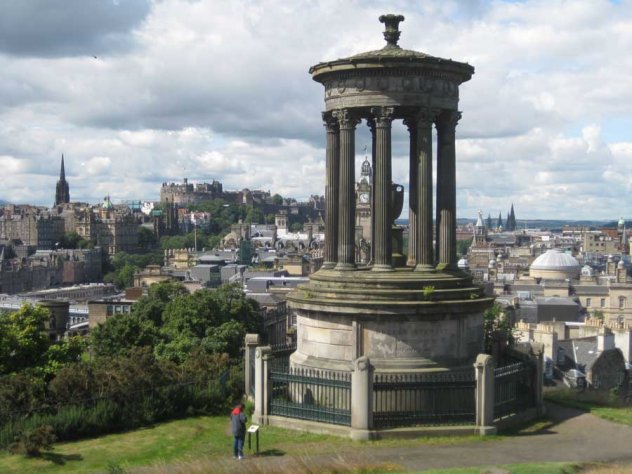Famous buildings in Edinburgh

The John Knox House on Edinburgh’s Royal Mile is a well-known tourist attraction, described by one architectural historian as ‘improbably picturesque’. It is actually a matter of debate whether the fire-brand preacher ever lived there. Ironically, when Knox was at the height of his fame, the owner of the building was on the other side of the political debate – as the goldsmith to Mary Queen of Scots.
The University of Edinburgh’s Old College is one of the city’s most important public buildings, and its dome is a prominent part of the city skyline. However the location has an interesting history that pre-dates the building we see today.
White Horse Close is a picturesque collection of buildings at the foot of the Canongate, but although stepping into its courtyard feels like stepping back in time, all is not as it seems. The close was heavily restored in the 1960s, focused on typical Scottish features such as crow-stepped gables, forestairs and pantiled roofs.
General Register House on Princes Street is one of the oldest custom built archive buildings still in use in the world. Today this grand classical building is home to the National Archives of Scotland, but it was once derided as only fit for pigeons.
The real joy of Edinburgh’s Old Town is to explore the labyrinth of closes and wynds, and step back many centuries into another world. Tweeddale Court is one the best examples, with an entrance opposite the Scottish Storytelling Centre just before the World’s End pub.
The Canongate Tolbooth is a highly distinctive building, and its clock is a favourite photo for passing tourists. As well as being an interesting and important historic building, the Tolbooth is a reminder that at one time the Canongate was separate from Edinburgh.
The typical New Town street is a terrace of graceful and neat terraced houses, but 36 St Andrew Square was designed to break that rule. In its day it would have stood out as the grandest house in the New Town, but even now it is still an imposing building.
Lady Stair’s House lies just off the Lawnmarket, a location favoured by tourists as a picturesque piece of Old Edinburgh. Perhaps its popularity partly lies in fairy-tale look, described by one architectural expert as “…picturesque Arts & Crafts confection, with...vigorously unreal stonework”. However the building does have almost 400 years of history, and represents a remarkable survival from the past.
The Scottish Parliament at the foot of the Canongate is one of Edinburgh’s best examples of 21st century architecture, but within the complex of modern buildings is a relic that is over 300 years old – Queensberry House.
James Court has a special place in Edinburgh’s history, as it is connected to several of the most important figures in the city’s past. It built between 1723-7 by a developer called James Brownhill. His plan was for a courtyard building of exclusive apartments, following the style of its near neighbour Milne’s Court built thirty years before.
Moray House is one of the Old Town’s most historic, and yet also most invisible buildings, hidden in plain sight on the Canongate. It dates back to 1625, at a time when the Canongate with its more open spaces was a popular place for an aristocratic townhouse.
Tucked away off the Canongate in the Old Town is Acheson House, a grand seventeenth century building. For many years it has lain empty and on the ‘buildings at risk’ register, but now it has a new lease of life and soon the public will able to see inside this fascinating relic of old Edinburgh.







